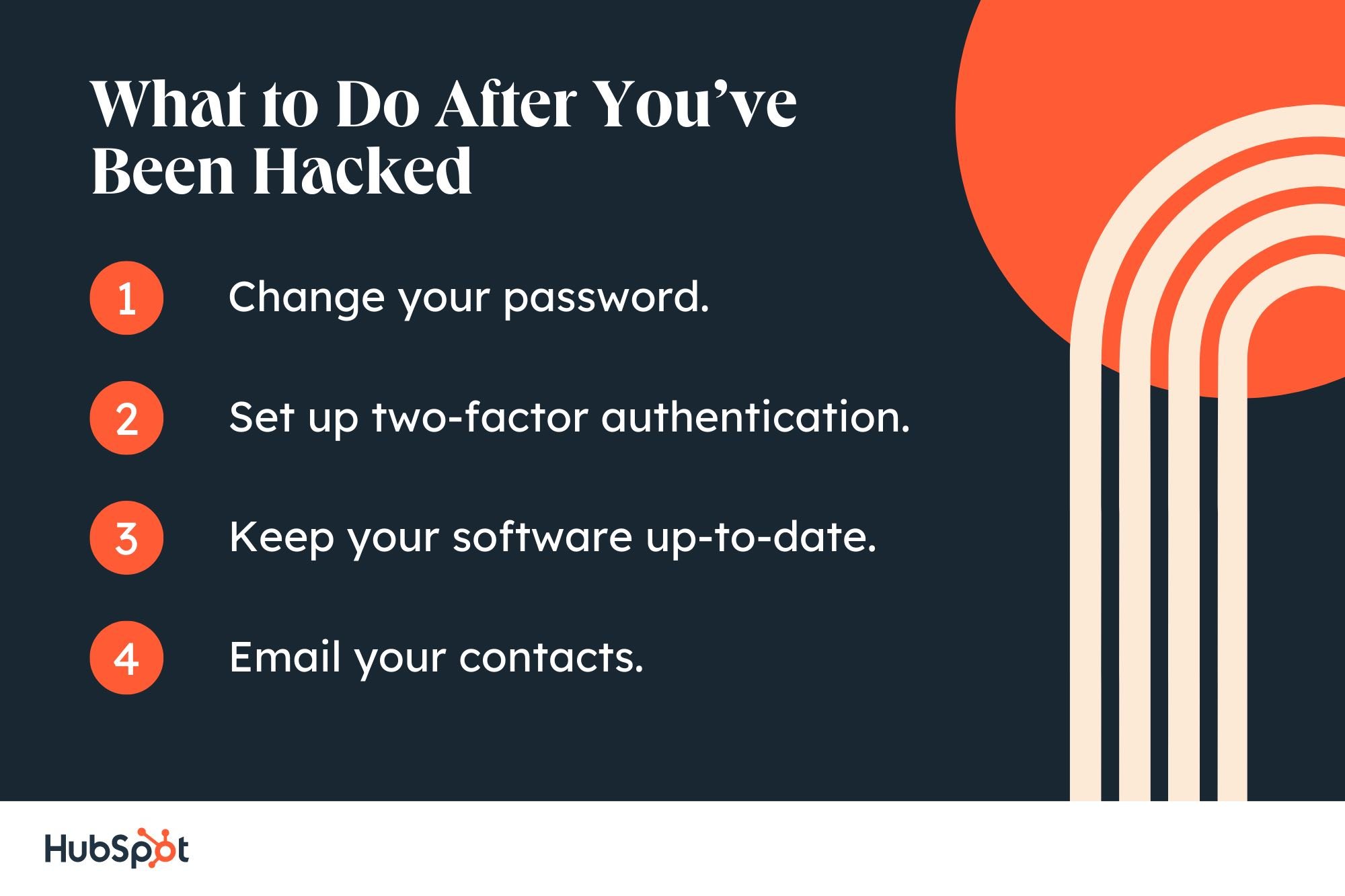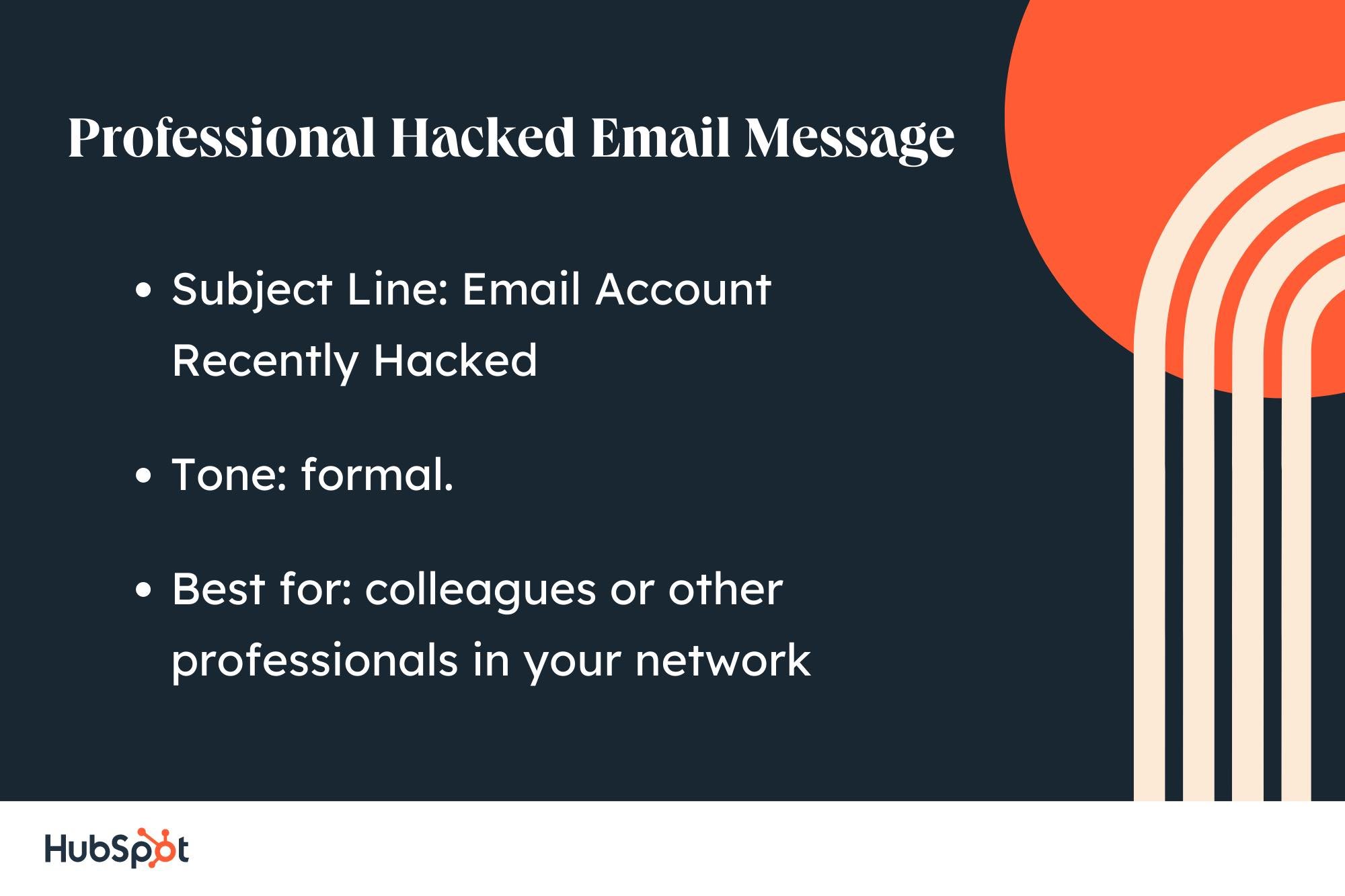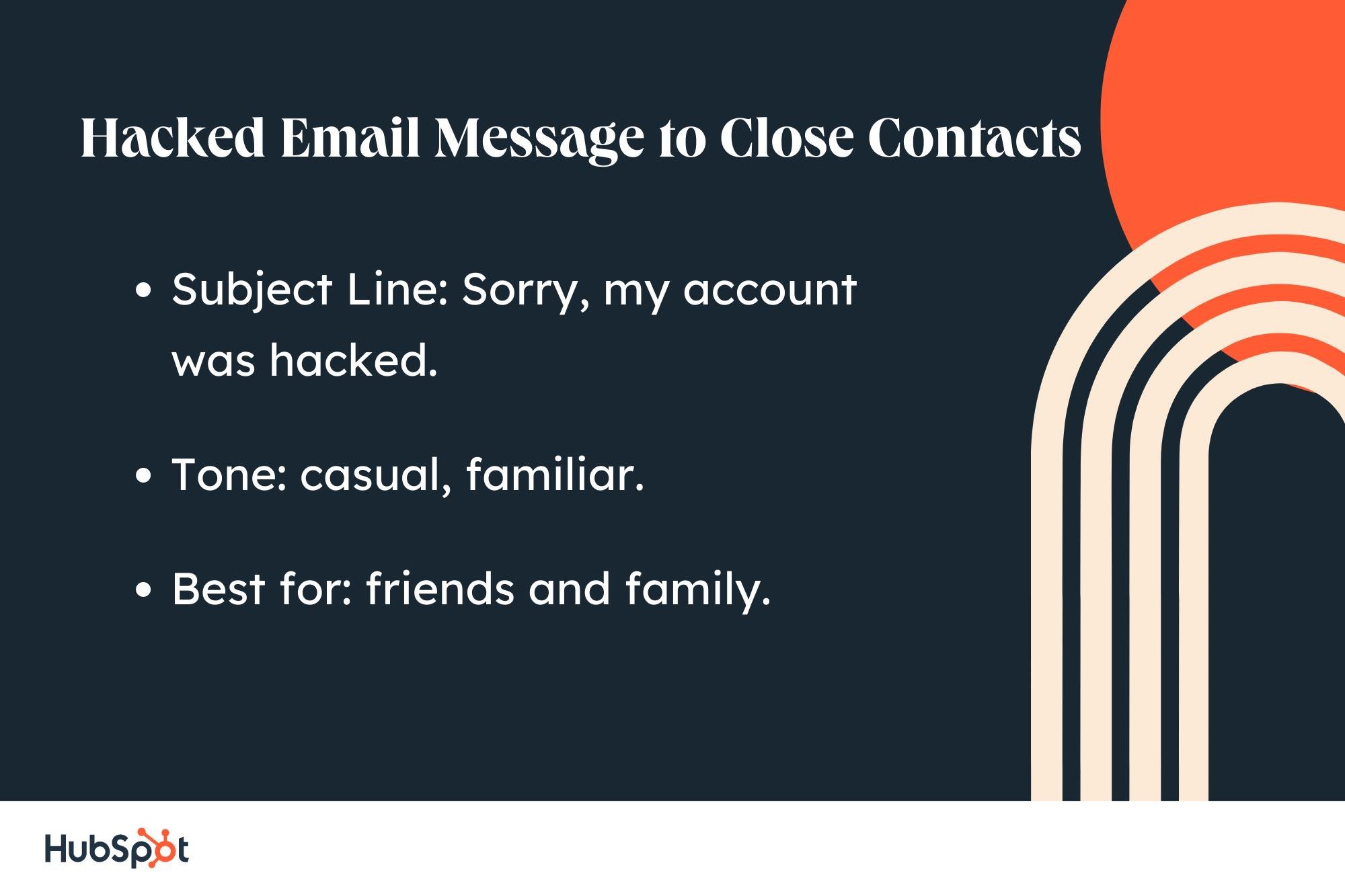If you've received an email from someone claiming to have hacked your account, don't panic. It's important to stay calm and take the necessary steps to protect yourself and your data.
This blog post will provide sample emails you can send to your contacts after being hacked. We will also share tips on protecting yourself from future hacking attempts.
What To Do if Your Email is Hacked
You can't always tell if you were hacked immediately. Some hackers may send corrupted emails to your contacts without leaving a trail.
Other times, filter settings might catch suspicious messages and automatically place them in “Spam” or “Trash,” so you never even see them.
Luckily, there are a few signs to watch out for if you suspect someone has hacked your account:
- You receive strange or unsolicited emails from someone with your own name or a third-party name. Look for blurred images, poor grammar, and strange email addresses.
- People you know tell you they've received unusual emails from you. They’ll likely delete them immediately, so don’t be surprised if no one has any to show you.
- Your password stops working out of nowhere. One day, you just can’t log into your account anymore.
- You see unexpected activity on your account, such as new contacts or messages you didn't write.
If all signs point to hacking, keep calm. Hacking is a hassle, but it’s nothing you can’t resolve in a few steps.
Steps to Follow After You’ve Been Hacked

1. Change your password.
If you think someone’s hacked your email, the first thing you should do is change your password. It might seem obvious, but it's an effective way to stop the hacker from further accessing your account.
2. Set up two-factor authentication.
After you've changed your password, we recommend enabling two-factor authentication (if it's not already enabled). Two-factor authentication adds an extra layer of security to your account by requiring you to enter a code from a second device when you sign in.
If you're unsure how to change your password or enable two-factor authentication, contact your email provider for help.
3. Keep your software up-to-date.
Another way to protect yourself from hackers is to ensure that your software is always up-to-date. This includes your operating system, web browser, antivirus software, and any other programs you use.
Outdated software can have security vulnerabilities that hackers can exploit to gain access to your account. Keeping your software up-to-date can help close these security holes and make it harder for hackers to get into your account.
4. Email your contacts.
Once you've changed your password and enabled two-factor authentication, email your contacts, letting them know someone hacked your account. They’ll know to be cautious of any emails they received from you.
Doing this as soon as possible ensures they remain on high alert and protect them from future attacks.
Sample Letters for Hacked Email
Messages in this situation serve two purposes: to inform people of what happened and to provide directions on how to protect themselves. Being brief and apologetic will allow them to quickly turn their attention to the necessary steps, such as remaining vigilant.
Use the templates below if you ever are hacked.
1. Hello, This is [Your Name], and I'm writing to let you know that my email account was hacked.

Hi [Recipient Name],
I wanted to let you know that my email account was recently hacked. I've changed my password and taken steps to secure my account, but I wanted to warn you in case you received any suspicious emails from me.
If you received any suspicious messages, please delete them, and do not click on any links.
I'm sorry for the inconvenience. Thank you for understanding.
Take care,
[Your Name]
2. Sorry, my account was hacked.

Hey [Recipient Name],
If you got any weird emails from me over the past few days, I'm sorry. My account was hacked, but I've since changed my password and added two-factor authentication.
Delete any suspicious emails you’ve received, and don't click on any links.
Sorry about this, and thanks for bearing with me.
[Your Name]
3. Hey, it’s [Your Name] ― I got hacked.
![sample letter for hacked email: subject line, Hey, it’s [Your Name] ― I got hacked; tone, professional; best for acquaintances.](https://localseoresources.com/wp-content/uploads/2022/11/sample-letter-for-hacked-email-acquaintances.jpg3Fwidth3D200026name3Dsample-letter-for-hacked-email-acquaintances.jpg)
Hi [Recipient Name],
Today, I discovered that someone had hacked my email and social media accounts. Any unwanted emails and messages you've received are spam — many of my contacts have gotten spam emails from my account.
My apologies for any inconvenience this may have caused you. I have taken steps to ensure that it won't happen again.
Thanks for your patience!
[Your Name]
4. Sorry [Recipient Name], I was hacked.
![sample letter for hacked email: subject line, Sorry [Recipient Name], I was hacked; tone, professional, apologetic; best for acquaintances and new contacts.](https://localseoresources.com/wp-content/uploads/2022/11/sample-letter-for-hacked-email-acquaintences-2.jpg3Fwidth3D200026name3Dsample-letter-for-hacked-email-acquaintences-2.jpg)
Hello,
I apologize for any unwanted emails you might have received in the last [timeframe]. My email account was hacked around [date], and spam messages were sent to my contacts, including you.
I’d never voluntarily sent this out to anyone, so I’m sorry if it made a wrong impression. Rest assured, I’ve secured everything already, so things should be secure moving forward.
Thanks for understanding,
[Your Name]
5. Team, my email was hacked.

Hey Team,
I got hacked on [date], and I think spam messages have been going out [timeframe]. Sorry about that — I just noticed it and took the necessary steps to fix everything on my end.
Keep an eye out for anything suspicious, and let me know if you continue getting any strange messages.
Thanks,
[Your Name]
Stay protected with HubSpot
Getting hacked is never fun, but it doesn't have to be the end of the world. By taking some simple steps, you can quickly get your account back under your control. Plus, you can help protect yourself and your contacts from future attacks.
At HubSpot, your security and safety are paramount. Our CRM platform for front office teams ensures the privacy of the data you entrust to us. Check out our site to learn more about how we keep you protected.




Recent Comments